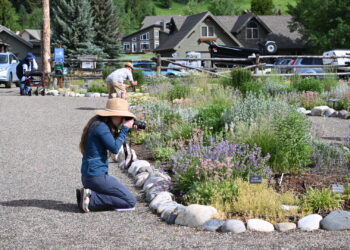New research explores water supply, climate change resilience
By Stephanie Lynn EBS CONTRIBUTOR
Rebekah Levine, associate professor at the University of Montana Western, identified “snow refuges” in the headwaters of the Missouri River that could bolster summer water supply even as Montana heats up using a new map. Her conclusions resulted from seven years spent pondering the connection between winter snow and summer streamflow in partnership with The Nature Conservancy.
“Snow acts like a reservoir high in the mountains that releases water slowly through late spring and early summer. The high elevation reservoir, however, is not actually controlled by a head gate, but controlled by the amount of snow accumulated and the temperatures during the melt season,” Levine said. “The term ‘snow refuge’ is a way to think about the characteristics of the landscape that allow snow to remain for the greatest length of time.”
As warming temperatures cause precipitation to fall as rain rather than snow, late summer stream and groundwater levels in Big Sky, and across the West, will dwindle. Pinpointing locations that protect snow will allow land managers and conservation organizations to strategically plan projects that protect water supplies and native species.
“In Big Sky, the streams that have the highest potential to hold snow and supply water are the South Fork of the West Fork, West Fork, Cedar Creek and Jack Creek,” Nathan Korb, freshwater director with the Montana chapter of The Nature Conservancy, said. “These areas will become increasingly important in the future.”

Wildlife and people depend on snowpack reservoirs to supply about 50 to 80 percent of water in Montana, according to the Natural Resources Conservation Service Montana. Areas like Big Sky that shelter snow during the spring will play a critical role in nourishing rivers and streams parched by a warmer world with a growing population.
“When we have to make strategic decisions about which streams will benefit from a restoration project or where we should focus on native fish conservation, this map can help us decide which projects or management actions make sense in which rivers,” Levine said. “Then we can ask whether we want to preserve the most resilient streams, or perhaps focus on streams closer to the brink.”
Stephanie Lynn is the education and communications coordinator for the Gallatin River Task Force.













